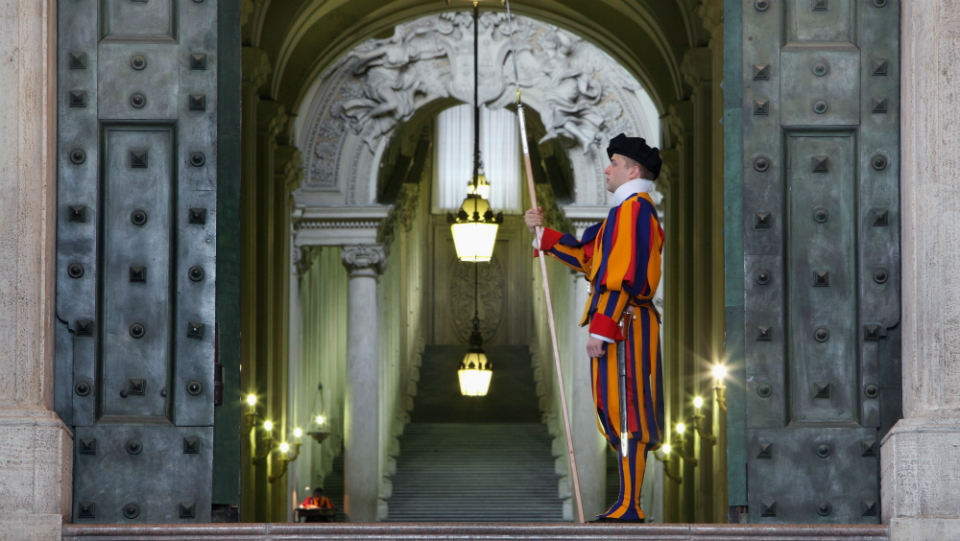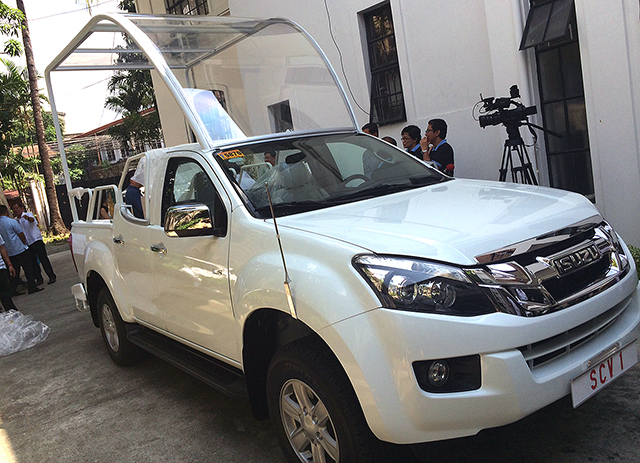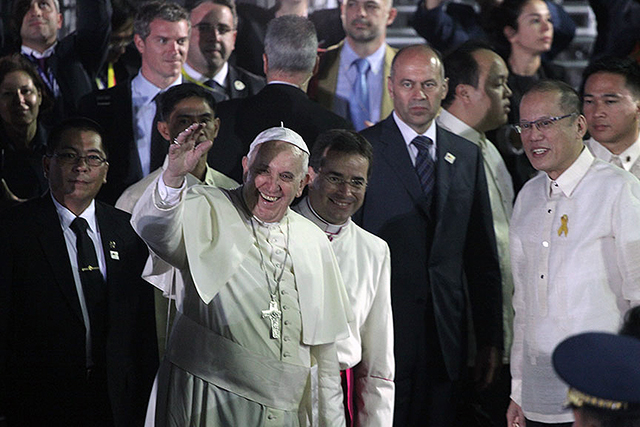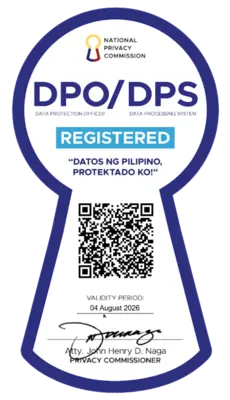ADVERTISEMENT
Filtered By: Scitech
SciTech
Guarding the Man in White: An inside look at papal security
By BEA MONTENEGRO, GMA News
If there's anything that sums up the Pope's security, it's this: There's much more to it than those flashy Swiss Guards would make you believe.
Not only is he the undisputed leader of the Catholic Church worldwide, the Pope is also the Bishop of Rome and head of state of Vatican City. It's no wonder, then, that ensuring his safety is a very serious matter.
The security around the Pope is tight for very good reasons: previous papal visits in the Philippines in 1970 and 1995 were marred by unsuccessful assassination attempts.
During a media briefing on January 12, President Benigno Aquino III said that local security officials were coordinating with the International Criminal Police Organization (Interpol) and with members of ASEAN to thwart any threats from the Islamic State (IS) militants.
Interpol and ASEAN are carefully watching suspected members of the IS. However, President Aquino stressed that there are no direct threats aimed at Pope Francis at present.
The Swiss Guard

The Swiss Guard

Perhaps the most famous symbol of the Pope's security detail is the complement of halberd-wielding, morion-helmeted honor guards bedecked in blue and yellow.
Formed in 1506 by then-Pope Julius II, the Swiss Guard serves as the security of the Vatican in general as well as being responsible for the personal safety of the Pope. In 1527, 190 guards died fighting the troops of the Holy Roman Empire during the Sack of Rome, allowing Pope Clement VII to escape.
But the guards' flamboyant uniforms actually date back to much more recent times: Commandant Jules Repond (1910-1921) is the chief reason why the guards are dressed in such finery today.
"The colours which make the uniform so attractive are the traditional Medici blue, red and yellow, set off nicely by the white of the collar and gloves," the Vatican notes.
However, as was seen upon his arrival in the Philippines, the Pope is also surrounded by somber, black-clad agents. Indeed, the security around the Pope matches and even rivals that of other nations' heads of state.
The Shepherd One
The US president’s Air Force One is a well-known icon. It’s made its way into popular media, and even has a movie centered around it. What’s not as well-known is the “Shepherd One,” an Italian Alitalia A330 Airbus that’s specially chartered for official papal business.
The Pope arrived in Manila in a SriLankan Airlines plane following his visit to that country, but he is expected to return to the Vatican in the Shepherd One.
In a report by NBC, the inside workings of a papal flight were described. All journalists in the flight are tagged VAMP (Vatican Accredited Media Personnel) and all their luggage is also tagged, even carry-ons. Everything on board the plane has the papal seal emblazoned on it.
In the Philippines, airport authorities beefed up security measures in preparation for the papal visit.
In a notice to airmen released earlier this month, the Civil Aviation Authority of the Philippines announced the implementation of “no-fly zones” in specific areas to be visited by the pope. The zones have a radius of 3 nautical miles from the venue and extends up to a height of 18,000 feet.

The Popemobile

In an unusual move, Pope Francis doesn’t want to use an armored Popemobile while he’s in the Philippines. Instead, a custom-built Popemobile is provided for the duration of the papal visit.
Earlier this year, Pope Francis said that he preferred to use open-top cars rather than the usual bulletproof Popemobiles, calling them “sardine cans.”
According to Fr. David Concepcion, head of the transportation committee, Pope Francis’ request of an open Popemobile is a symbol of compassion towards the people.
“Ito ay simbolo ng kaniyang pakikiramay at pakikidaumpalad,” Fr. Concepcion said.
“It is true something could happen to me but let’s be realistic, at my age I do not have much to lose,” Pope Francis said, adding that the standard Popemobile made it hard to connect with the faithful who flock to see him. Ever since taking up the role of pope, it’s been a noted practice of his to physically reach out to the people.
In 1995, Pope John Paul II rode a white Popemobile. It had a bulletproof cage made of glass at the back of the vehicle. The first bulletproof Popemobile was supposedly introduced in 1981 after an assassination attempt on Pope John Paul.
Double security

In relation to the 2015 papal visit to the Philippines, Malacañang announced that Pope Francis will be protected by twice the number of Presidential Security Group (PSG) personnel that usually guards President Aquino, a move that might be an attempt to offset the fact that the Popemobile won’t be bulletproof or enclosed. According to sources, the PSG personnel are undergoing a program on VIP security and physical training.
In Tacloban City, advanced security forces arrived ahead of Pope Francis. According to a report by radio dzBB’s Carlos Mateo, the added forces include members of the Philippine Coast Guard and the PNP Explosives and Ordnance Division. In Manila, according to a report by GMA News’ Hadiji Rieta, an X-ray scanner was installed in the Apostolic Nunciature along Taft Avenue.
AFP Chief of Staff Gregorio Catapang said that 17,000 soldiers and 20,000 police officers will be mobilized when the pope arrives in the Philippines. Catapang said that this will be the largest contingent deployment for a visiting head of state in the country.
Previous popes
Perhaps one reason why the government is so keen to assure Pope Francis’ safety is because previous papal visits haven’t been as peaceful as they would have liked.
In November 1970, Bolivian artist Benjamin Mendoza attempted to stab Pope Paul VI, just minutes after he disembarked from his plane.
In January 1995, Pope John Paul II visited the Philippines for the second time for World Youth Day. Just days before, the Bojinka Plot masterminded by Ramzi Yousef was discovered by authorities.
But this 2015, officials seem confident about Pope Francis’ stay in the country.
“We are adequately prepared,” said Marciano Paynor, executive director of the Papal Visit 2015 - National Organizing Committee. “In other words, pinaghandaan natin hanggang sa makakaya natin, hanggang sa kakayahan natin, the rest is prayers.” — TJD, GMA News
More Videos
Most Popular




